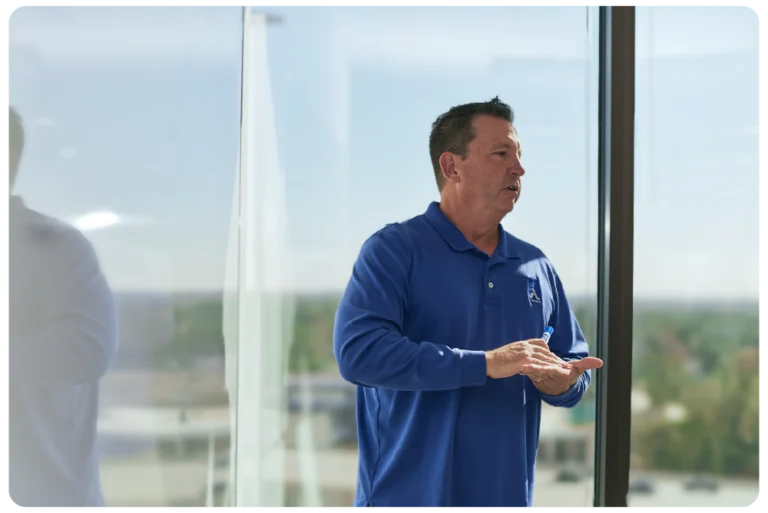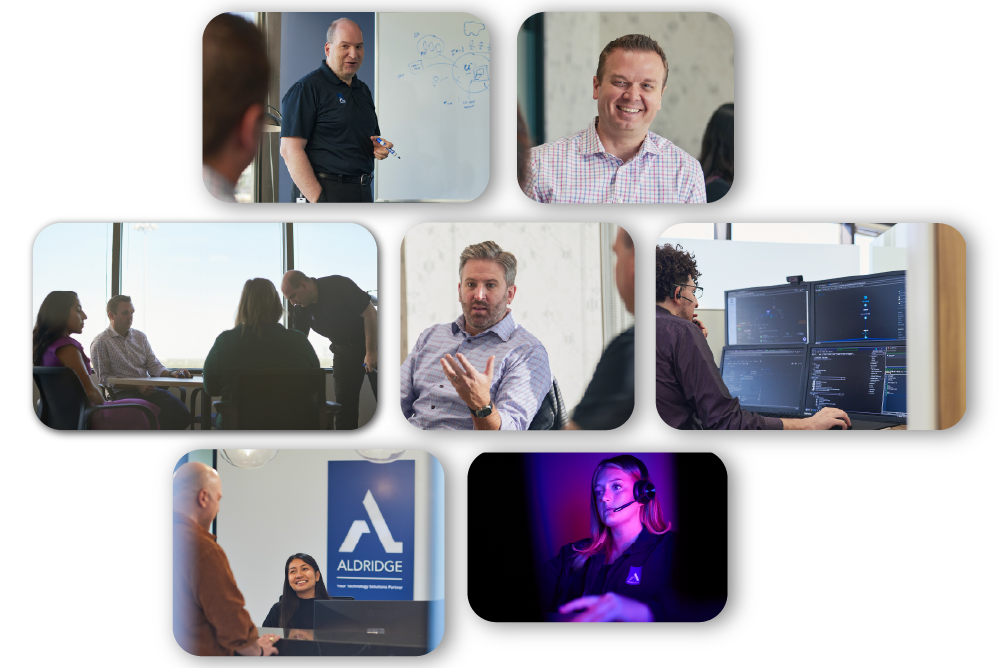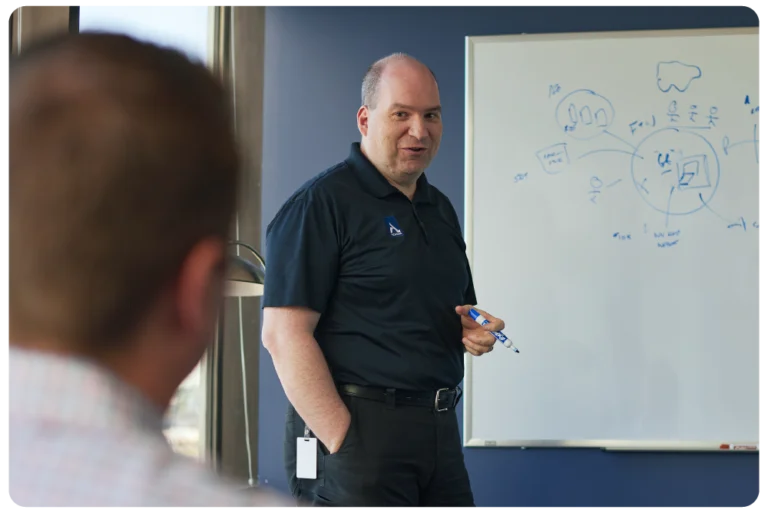A growing U.S. manufacturer was operating on an aging, overly complex IT environment managed by a single internal engineer. Over time, unmanaged growth led to server sprawl, rising costs, and increased risk, with little documentation or oversight. When a new CFO joined the company, they quickly recognized the lack of IT strategy and visibility as a major concern. It became clear the business didn’t just need help maintaining systems—they needed a true IT partner to clean up the existing environment and ensure it wouldn’t fall into disarray again.
After partnering with Aldridge, the company streamlined its infrastructure, eliminated unnecessary systems, and reduced IT infrastructure costs by more than 400%. Today, they operate on a modern, secure, and efficient IT foundation designed to scale with their continued growth.
Client Profile
Industry: Manufacturing
Number of Employees: 300+
Location(s): Texas-based; multiple U.S. facilities
The Challenge
For years, the company relied on a single internal engineer to manage its entire IT environment. He was trusted, responsive, and deeply committed, but as the business grew, so did the burden. New systems were added quickly to keep operations moving, but nothing was ever retired or restructured. What started as a manageable setup had ballooned into a sprawling, tangled infrastructure with no clear plan behind it.
Over time, keeping the lights on became a full-time job. The engineer was stretched thin, stuck in reactive mode, and doing everything he could just to avoid downtime. He didn’t have time to document what was in place, much less step back and assess whether it was sustainable.
From the outside, IT seemed fine—until things started breaking. Costs kept rising. Support tickets piled up. Systems felt fragile. And leadership had no clear explanation for what they were spending money on or why problems kept resurfacing.
When the new CFO took a closer look, the picture became clear: there was no real strategy, no visibility, and no way to move forward with confidence. To get an expert opinion, they brought in a fractional CIO to evaluate the environment. After a brief assessment, his recommendation was blunt: “You don’t need more IT people. You need a partner who can help you do this the right way.” That’s when the company turned to Aldridge.
What We Found
As soon as we got involved, the root of the problem was clear: unchecked sprawl. The company had accumulated more than 100 servers over time, each one added to solve a short-term need but rarely cleaned up or consolidated. No one had a complete picture of what was in use, what was outdated, or what could be eliminated.
The environment had become fragile, overbuilt, and expensive to maintain. There was little documentation and no disaster recovery process. Backups were inconsistent. If a system went down, there was no telling how long recovery would take or whether the data would even be recoverable.
The internal engineer was doing everything he could, but he was underwater. His time was spent putting out fires and manually maintaining a bloated infrastructure, leaving no room for strategic planning or improvement. Leadership was growing more uncertain, facing surprise costs with no clear understanding of what they were paying for or whether it was worth it.
What We Did
When we first assessed the environment, we were direct with the company: the cost to manage their IT as it stood would be high—and it wouldn’t deliver good value. The environment was too complex, too bloated, and too unstable for a typical managed services engagement to make sense.
Rather than jumping in and charging them to maintain an overbuilt system, we recommended starting with a full IT audit. The goal was to figure out what the business actually needed, identify what could be eliminated or improved, and design a right-sized environment that would be stable, scalable, and cost-effective to support.
We approached the audit from both directions, combining business context with deep technical analysis:
Top-down analysis:
We interviewed leadership and department heads to understand how the business operated. What systems were mission-critical? What workflows depended on IT? What pain points were slowing teams down?
Bottom-up mapping:
We conducted a detailed review of the entire infrastructure, from physical and virtual servers to storage, networking, security, and backup systems. We documented how everything was connected, identified redundancies, and flagged anything outdated or unstable.
By connecting those two perspectives, we built a clear roadmap for cleanup and redesign. We could see what needed to stay, what needed to be retired, and what needed to be reimagined. The result was a modern, streamlined environment built on best practices—resilient, secure, and ready to scale.
Once the cleanup was complete, we transitioned into a co-managed support model. The internal engineer remained a key part of the team, now backed by a partner who could help maintain alignment, drive improvements, and keep the environment running smoothly.
Where the Manufacturer Is Today
With the environment rebuilt, the company cut infrastructure-related IT costs by more than 400 percent. The bloated, fragile setup was replaced with a lean, reliable foundation that could support the business without unnecessary complexity or risk.
The internal engineer was no longer bogged down by busywork and firefighting. He could finally focus on high-value initiatives, like optimizing ERP systems and supporting production workflows. Leadership gained visibility into their IT environment and could make decisions with confidence, knowing their technology was aligned with their goals.
We didn’t just start managing their IT—we helped them fix it first. Today, the company is better equipped to grow, backed by a foundation that works and a partner who understands what it takes to keep it that way.
Fix What’s Holding Your Business Back
Are outdated systems and hidden costs draining your IT budget? Aldridge helps manufacturers modernize IT, cut waste, and build secure environments that support long-term growth. Contact us to learn how we can help.







